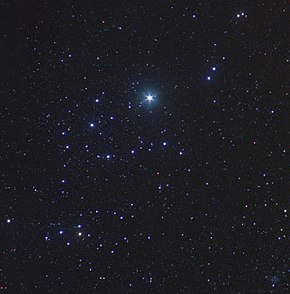 Melotte 20, an open cluster in the constellation Perseus that was first catalogued by Philibert Jacques Melotte in 1915. | |
| | |
The Melotte catalogue is a catalogue of 245 star clusters compiled by British astronomer Philibert Jacques Melotte. It was published in 1915 as A Catalogue of Star Clusters shown on Franklin-Adams Chart Plates. [1] Catalogue objects are denoted by Melotte, e.g. "Melotte 20". Dated prefixes include as Mel + catalogue number, e.g. "Mel 20". [2]
Contents
The catalogue contains 161 open clusters, 81 globular clusters, two asterisms, and one galaxy.














































































































































